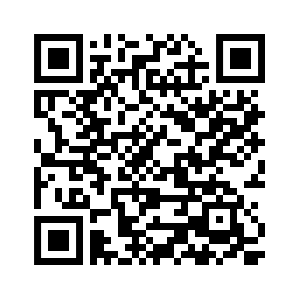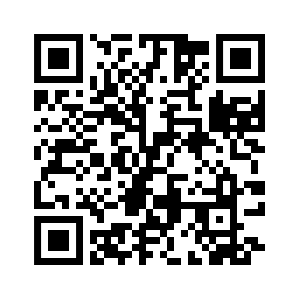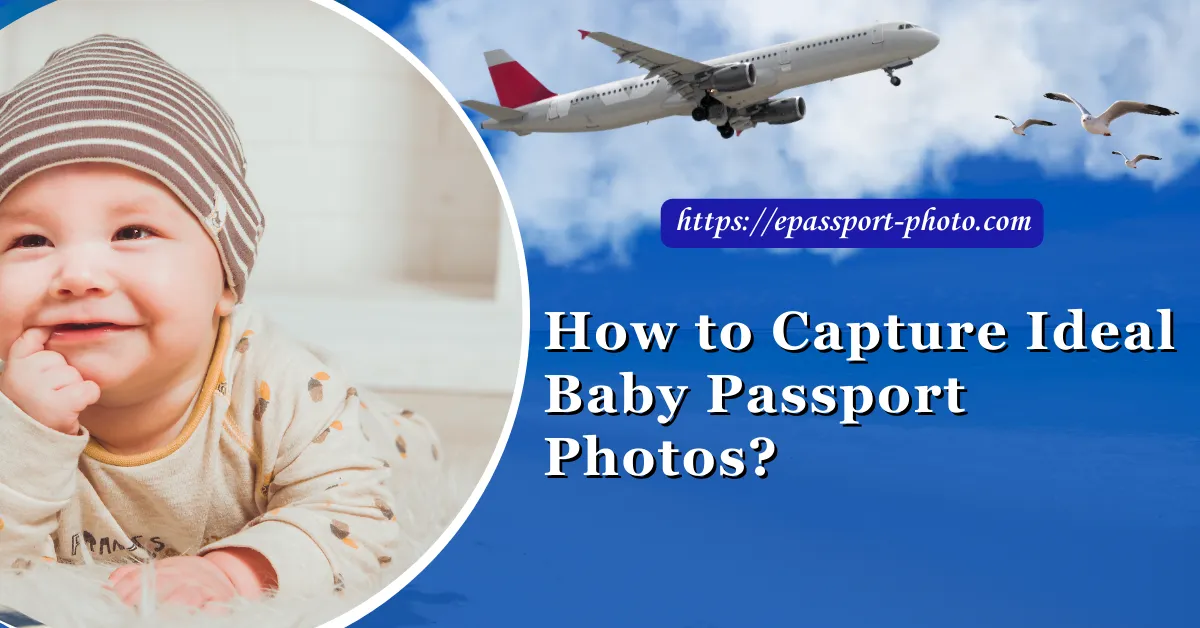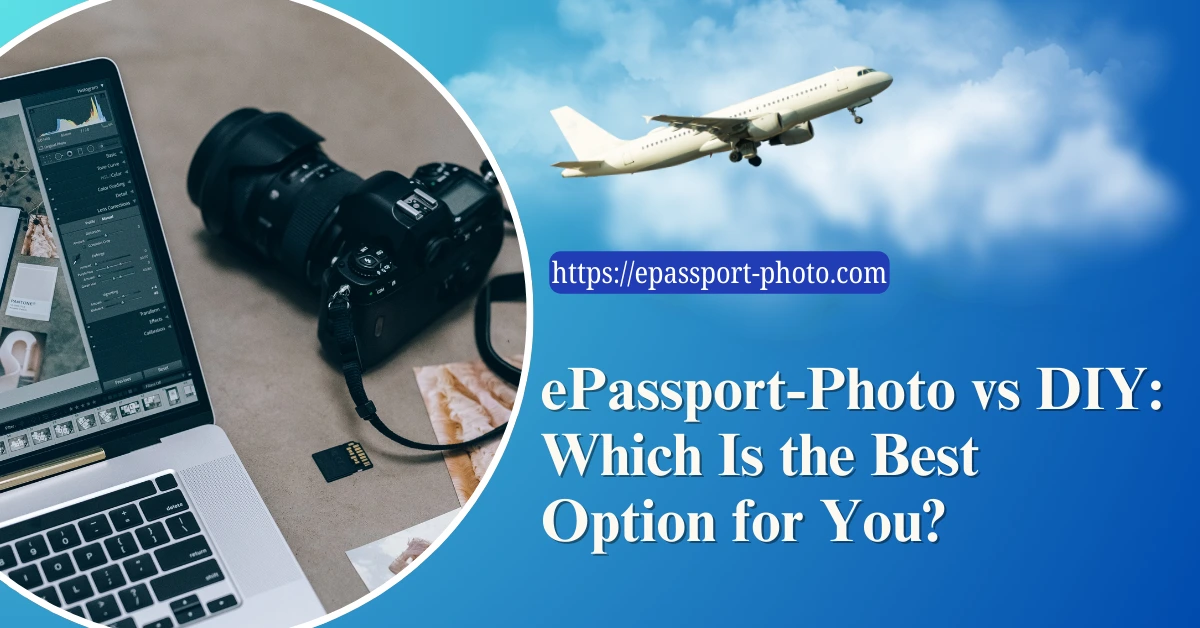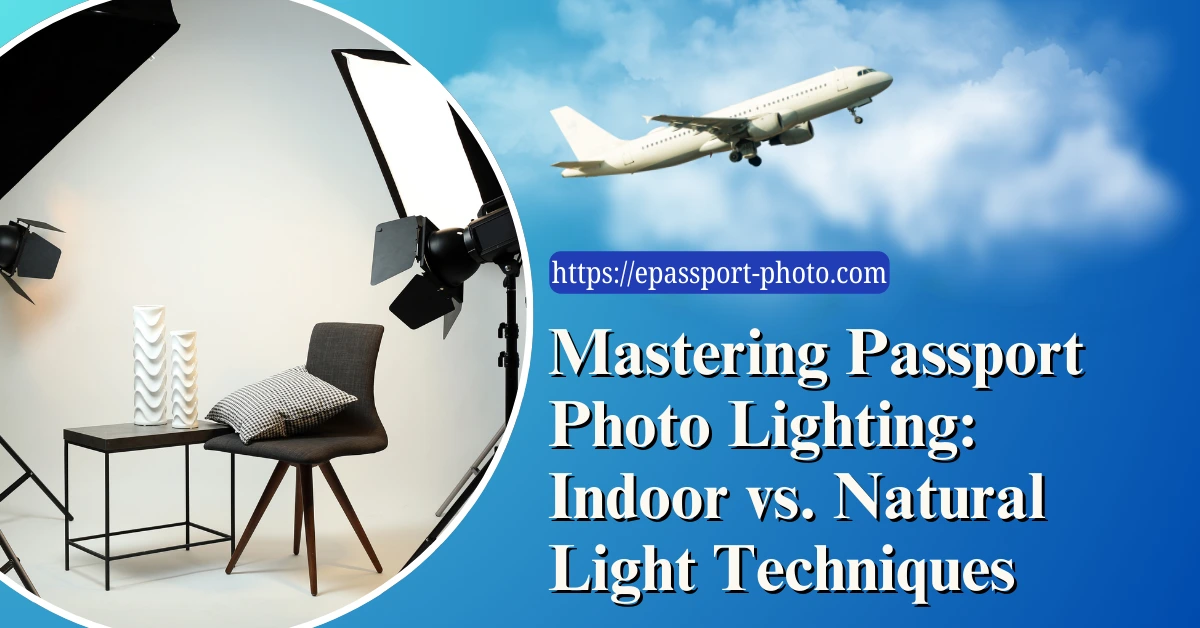Are you planning an exciting family adventure and wondering how to capture those ideal baby passport photos for your little one's travel documents? In this blog post, you will get a comprehensive idea to capture perfect baby passport photos. Letâs begin with, why you need to travel with your kids.
Introduction to Traveling with Kids
Traveling with children can be a rewarding experience, offering numerous benefits such as developing cultural awareness and tolerance, building strong family bonds, and expanding cognitive and emotional skills.
Challenges of Traveling with Children
Age-Appropriate Planning and Activities: Planning a family trip with kids of varying ages takes thoughtful preparation. A 2-year-old is captivated by different things than a 13-year-old. Locating activities and lodging suitable for each child's interests and needs can prove difficult, but doing so is essential for an enjoyable vacation that delights all.
Ensuring Safety and Security: Keeping your child safe while traveling is a top priority. From childproofing accommodations to ensuring they have proper identification, it's essential to take extra precautions to maintain their safety and security throughout the journey.
Managing Travel-Related Stress: Traveling, especially with young children, can be stressful. From airport security checks to long flights or car rides, managing the stress levels of both parents and kids is crucial for an enjoyable trip.
Importance of Proper Baby Passport Photos
Ensuring Smooth Travel Documentation: Properly taken baby passport photos are a requirement for obtaining travel documents. They are essential for passports, visas, and other identification purposes. Without them, you may face delays or issues when crossing international borders with your little ones.
Avoiding Delays or Rejection: Incorrect or subpar passport photos can lead to delays or even rejection of travel documents. This can disrupt your travel plans, causing unnecessary stress and complications at immigration checkpoints.
Official Guidelines for Taking U.S. Passport Photo
A photo must be included with the application once all the required paperwork for a minor's passport has been completed. The guidelines remain the same whether you're taking photos for your passport or those of your kid:
Passport photos must be taken within the last six months period.
Passport photos should be in color, black and white photos are not accepted.
Photos must be clear and in focus with natural skin tones.
Filters or special effects are not allowed in passport photos.
Selfies aren't allowed for passport photos.
Glasses and hats are not allowed.Â
Head covering for religious purposes is allowed but it should not cover the face.
Photo must be taken in front of a plain white or off-white background.
Your baby must directly face the camera with a neutral expression.
Dimension for the U.S. passport photo must be 2 inches in height and width.
Requirements for Baby Passport PhotosÂ
Size and Dimensions of Baby Passport Photo
Standard Passport Photo Sizes: The American passport photo size for adults is 2 inches by 2 inches (51mm x 51mm). However, when it comes to baby passport photos, there are some variations to consider.
Special Considerations for Children: Passport photos for infants and toddlers come with specific guidelines. The baby's face should directly face the camera lens, eyes open. Centering their head in the frame against a plain white backdrop is ideal. For a compliant photo, the child should not hold any toys, pacifiers, or other items. Capturing their gaze and looking straight at the camera is key.
Digital vs. Printed Photos: Digital photography provides options for child passport photos - printed or digital format. While many nations accept digital files now, it's important to verify the format preferred by the appropriate agency. If submitting a digital photo, be sure it adheres to outlined technical specifications including resolution and file type. Digital pictures can be taken at home or a studio, but confirm requirements to avoid processing delays. With proper preparation, digital passport photos offer convenience while still meeting official guidelines.
Clothing and Appearance Guidelines
Neutral Clothing Choices: Dress your child in neutral, solid-colored clothing. Avoid vibrant patterns, as they can detract from the clarity of the facial features. Simple clothing choices ensure that your child's face is the primary focus of the photo.
Avoiding Headwear or Decorative Accessories: When taking baby passport photos, it's important to remember that headwear, hats, or decorative accessories like headbands are generally not allowed. Your child's face should be fully visible, with no obstructions, to meet the photo requirements.
Ensuring a Clear and Natural Facial Expression: Encourage your child to maintain a neutral, natural facial expression. Smiles or frowns can affect the acceptability of the photo. A calm, relaxed facial expression helps ensure the photo meets the necessary standards.
Lighting and Background Recommendations
Lighting: Proper lighting is key to capturing a clear and well-exposed passport photo. Ensure that the lighting is even and free from harsh shadows. Soft, diffused lighting works best to highlight your child's features while eliminating unwanted shadows.
Background Colors: The background of the U.S. passport photo should be white. Avoid busy or dark backgrounds as they can distract from the subject.
Eliminating Shadows or Glare: Pay close attention to any shadows or glare that may appear on your child's face. Properly positioned lighting can help eliminate shadows, and avoiding glossy or reflective clothing can prevent glare in the photo.
Tips for Capturing Perfect Baby Passport Photos
Preparation Before the Photo Session
Timing the Session Appropriately: Choose the right time for the baby passport photo session when your child is well-rested and in a good mood. Avoid scheduling the session during naptime or mealtime, as this can lead to fussiness and impede the process.
Relaxing the Child for Better Results: Create a relaxed and comfortable environment to put your child at ease. Ensure the room is at a comfortable temperature, and play soft, soothing music if it helps your child relax. Avoid making the session feel like a high-pressure task.
Ensuring a Clean and Neat Appearance: Before the photo session, make sure your child is clean and well-groomed. Comb their hair and wipe their face to remove any dirt or smudges. This ensures a neat appearance in the baby's passport photo.
Finding the Right Photographer or DIY Methods
Identifying Professional Baby Passport Photo Services: If you prefer a hassle-free and expertly executed approach, consider visiting a professional baby passport photo service. These professionals are well-versed in the specific requirements for baby passport photos and can ensure that your child's photos meet all the necessary criteria.
Capturing Baby Passport Photos at Home: Taking baby passport photos at home is a cost-effective, convenient option worth considering. With the right gear, backdrop, and a bit of patience, quality photos can be achieved in a do-it-yourself style. This avoids the time and expense of a professional studio. However, meticulous focus on the photo guidelines is imperative for success. With thoughtful preparation and effort, DIY baby passport photos can check all the boxes for official submission.
Utilizing Mobile Passport Photo Applications: Smartphone passport photo apps conveniently guide DIY baby passport photos at home that meet official criteria. Choose a reputable app that reliably follows specifications for dimensions and criteria. With careful selection, mobile apps allow easy, compliant baby passport photos without visiting a studio.
Essential Techniques for a Successful Photo Session
Maintaining a Distraction-Free Environment: Whether you're taking baby passport photos at home or using a professional service, it's essential to create a distraction-free environment for your kid. Remove any items or people that might divert their attention during the photo session.
Choosing Appropriate Camera Equipment: When embarking on photography within the confines of your residence, it is imperative to possess access to a formidable imaging device or a cutting-edge smartphone endowed with a high-definition camera. This measure guarantees that the captured visuals exhibit remarkable clarity, adhering scrupulously to the prescribed technical benchmarks.
Enhancing the Child's Comfort and Cooperation: To achieve the best results, ensure your child is comfortable and cooperative during the session. Bring their favorite toy or a comforting item to ease any anxiety. Be patient and take breaks as needed to maintain their cooperation.
Important Considerations for Children with Special Needs
Tips for Photographing Children with Disabilities
Sensitivity and Empathy While Communicating: It's essential to approach the photo session with sensitivity and empathy. Communicate with the child and their parents or caregivers to understand their specific needs and any challenges they may face during the session. Show patience, and create a comfortable and reassuring environment.
Adjusting to Individual Needs and Abilities: Recognize that each child with special needs is unique. Tailor the photo session to accommodate their individual needs and abilities. This might involve making adjustments to the environment, the lighting, or the timing of the session to ensure the child's comfort and cooperation.
Adhering to Applicable Legal Requirements: Be aware of any legal requirements that pertain to passport photos for children with disabilities. Some countries may have specific guidelines or exemptions for children who cannot meet the standard photo criteria due to their condition. Ensure that you comply with these regulations.
Dealing with Infants and Very Young Children
Methods to Capture Baby Passport Photos: Photographing babies can be challenging due to their limited ability to sit up or maintain a pose. Using a car seat or a prop to keep them in an upright position can help. Ensure they are awake and alert for the photo session, and use toys or sounds to capture their attention and maintain a focused gaze toward the camera.
Ensuring Safety and Comfort During the Process: Safety is paramount when working with infants. Make sure the environment is baby-proofed and free of any hazards. Use a spotter or an assistant to ensure the baby remains secure during the photo session. Keep the room comfortably warm and ensure the baby is well-fed and well-rested for a smoother experience.
Addressing Possible Challenges and Limitations: Be prepared for challenges such as sudden crying or fussiness. Have patience and allow for breaks if needed. Be adaptable and open to trying different methods to capture the perfect photo.
Special Considerations for Children with Unusual Circumstances
Children of Divorced or Separated Parents: Passport applications for children of divorced or separated parents have strict legal consent requirements. In most cases, permission from both parents is mandatory. Be sure to follow all laws and have the proper documentation before submitting a child's passport application. Failure to get consent from both parents can result in processing delays or rejection.
Foster or Adopted Children and Passport Photos: When applying for passports for foster or adopted children, be sure to have full legal documentation. Follow all requirements set by the adoption agency or court. Having proper paperwork and consent will avoid issues or delays with passport processing. Stay organized and transparent throughout the application process.
International Travel Rules for Unaccompanied Minors: Travel regulations for unaccompanied minors vary by country. Before international travel, research rules about required documentation, age restrictions, airline procedures, and more. Being knowledgeable about these policies is key to ensuring a smooth, legal trip for a child traveling alone. Stay up-to-date and organized with all necessary paperwork.
Did You Know?
Final Thought
In conclusion, capturing ideal baby passport photos is a crucial step when traveling with children. By understanding the specific requirements, preparing your child, and choosing the right method, you can ensure that their travel documentation is in order, leading to a smoother and more enjoyable family adventure.
FAQs
Can I take the passport photos myself?
You can take passport photos yourself, but they must meet the official requirements or they may be rejected. Professional passport photo services can help ensure proper formatting.
Is there a minimum or maximum age for getting passport photos?
There is no minimum age, but children under 16 need parental consent. No maximum age for passport photos.
What should I do if my child is unable to sit still during the photo session?
For young children who can't sit still, schedule the photo session when they are most alert and calm. Have toys or snacks to keep them occupied. The photographer should be experienced with children.
Are there any specific rules for passport photos of infants?
Infant passport photos should capture the awake, face-forward child looking at the camera with eyes open and a neutral expression. Support the baby's head for stability.
How can I ensure my child's safety during international travel?
Take proper precautions for your child's safety when traveling internationally. Research your destination, plan age-appropriate activities, and ensure you have proper documentation.
Can I take baby passport photos at home?
Yes, you can take baby passport photos at home if lighting and other requirements are met. Use a plain white background, good lighting, and a high-resolution camera.
What are the standard passport photo dimensions?
Standard passport photo dimensions are 2x2 inches, with head-sized between 1 - 1 3/8 inches from chin to crown of head. Print on matte or glossy photo paper.
How do I prevent shadows in the photo?
Use diffuse lighting and a white background to avoid shadows. Multiple light sources may help reduce shadows.
Can my baby smile in the passport photo?
It is recommended that babies must have a neutral expression without smiling or mouth open. But slight smiles are sometimes permitted. Check your country's requirements.
What if my baby's appearance changes after taking the photo?
If your baby's appearance changes significantly, new photos may be required. Consult the passport office for guidance. Periodic updates are recommended for young children.


